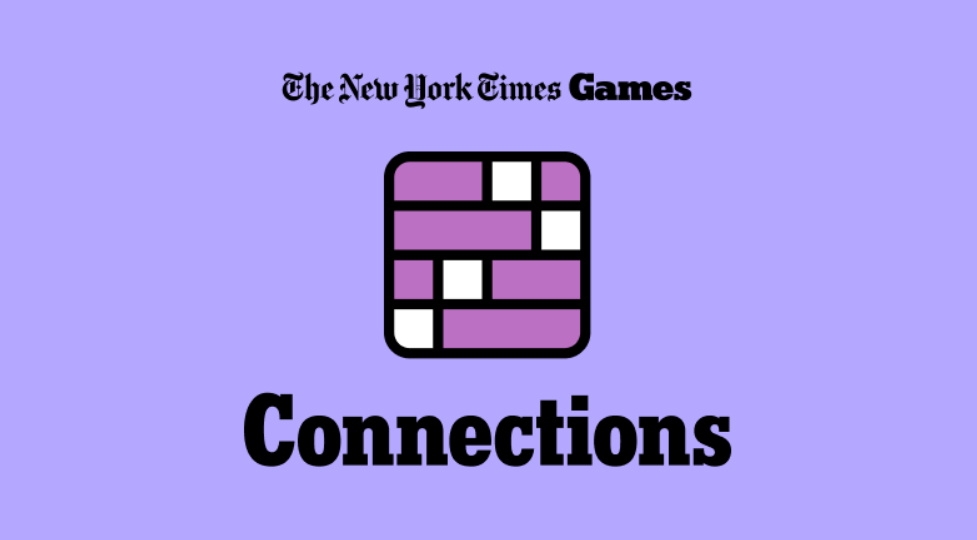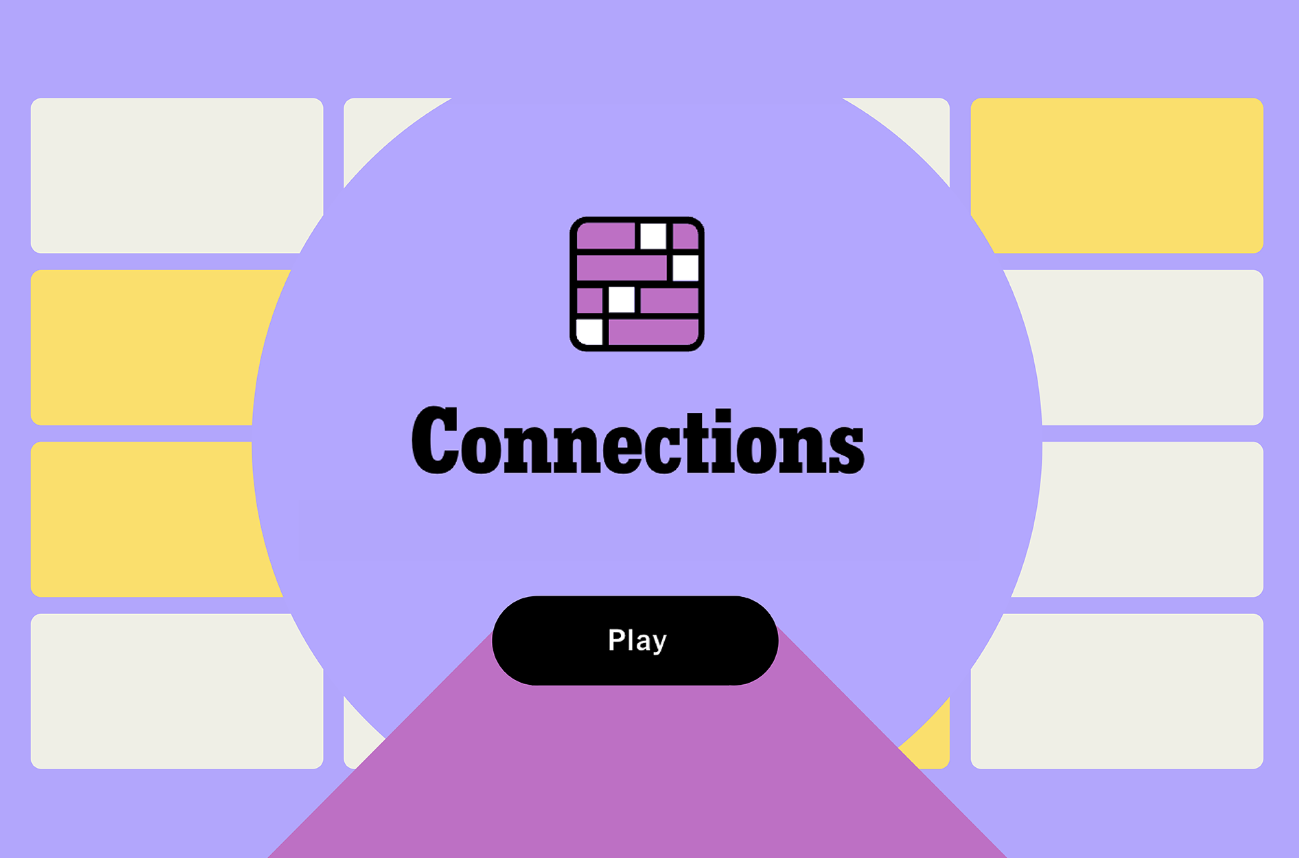The success story of the word-game Wordle, which held the crown as The New York Times’ most-played game for an impressive span of time, seems to be taking a new turn. The recent rise in popularity of another brain-teasing game, Connections, has captivated the attention of puzzle enthusiasts globally, dethroning Wordle from its position.
Connections, a game that encourages its players to discover links between seemingly unrelated words, has quickly climbed the ranks to become the newspaper’s most played game. The game’s success can be attributed to its engaging and thought-provoking nature, which keeps users coming back for more. The appeal of Connections lies in its simplicity and the mental stimulation it provides, making it an ideal pastime for those seeking a challenging yet enjoyable activity.
The rapid ascension of Connections to the top spot demonstrates the changing trends in the world of online gaming, where innovation and uniqueness are the key ingredients to capturing and sustaining the interest of users. As the gaming landscape continues to evolve, it will be interesting to see which game will next rise to the challenge and become the favorite among The New York Times’ readers.

What Makes Connections a Hit: Key Features and Gameplay Mechanics
Connections is a game that has gained immense popularity due to its unique features and engaging gameplay mechanics. The concept of the game is simple yet captivating: connecting elements within a certain time or moves limit to achieve a specific goal. This could be connecting similar colors, shapes, or symbols. The key features that make Connections a hit are its intuitive interface, varying levels of difficulty, and the thrill of achieving high scores.
The intuitive interface ensures that players, regardless of their age or gaming experience, can easily navigate through the game. The game’s graphics are visually appealing, and the smooth transitions between levels enhance the overall gaming experience. The varying levels of difficulty keep the players hooked. Starting with basic, easy-to-connect elements, the game gradually increases its complexity, challenging the player’s strategic thinking and quick decision-making skills. Some levels may require the player to connect elements in a particular sequence, while others may present obstacles that the player needs to circumvent.
The scoring system in Connections adds an element of competition. Players strive to achieve high scores, not just to outdo their previous records, but also to rank higher on the global leaderboard. Furthermore, the game incorporates special elements and power-ups that can multiply the score or provide additional benefits, adding an extra layer of strategy to the gameplay.
In addition to these, the game developers regularly introduce new themes and challenges, keeping the content fresh and engaging. The game also offers an offline mode, allowing players to enjoy it without an internet connection, thus broadening its accessibility. The option to connect with friends and challenge them in multiplayer mode also adds to the game’s charm.
In conclusion, it is the combination of an intuitive interface, engaging gameplay mechanics, and competitive elements that make Connections a hit among gamers. Its ability to challenge the mental agility of players while providing an entertaining experience has led to its widespread popularity.
From Wordle to Connections: How The New York Times’ Games Have Evolved
The evolution of The New York Times’ games, from the popular Wordle to the innovative Connections, highlights the newspaper’s commitment to engaging its audience interactively. The pivot towards sophisticated, thought-provoking games began with the acquisition of Wordle, a game designed to challenge vocabulary and pattern recognition skills.
This simple yet captivating game, which prompts players to guess a five-letter word within six attempts, quickly became a sensation, drawing in millions of players globally. Buoyed by Wordle’s success, The New York Times expanded its gaming portfolio with Connections, a game that tests players’ knowledge and understanding of various topics.
This evolution has not only amplified user engagement but also transformed the perception of the newspaper, which previously was primarily associated with delivering news and analytical content. Now, it’s not just a source of news but also a platform for intellectual entertainment. The shift also mirrors the changing dynamics of the media landscape, where diversification of content is key to maintaining and broadening readership. With this evolution, The New York Times has demonstrated its adaptability, tapping into the digital gaming trend to keep its audience engaged and entertained while still delivering high-quality journalistic content.

Player Feedback: Reactions and Reviews of Connections
Player feedback on the game Connections has been varied, reflecting a spectrum of perspectives and experiences. On one end, some players appreciate the game’s complexity and the mental exertiveness required to navigate through its intricate maze of relational webs. They applaud the game’s ability to stimulate critical thinking and strategic planning, honing their cognitive skills in the process. Its multi-layered narrative has captivated many, providing a rich context that adds depth to the gameplay. The originality of the concept and its successful execution have been praised, setting Connections apart from other games in the market.
However, there has been an undercurrent of dissatisfaction among some players, who found the game quite challenging. They express frustration over the intricacy of the connections, which they feel are sometimes overly complicated and confusing. Some players have reported feeling overwhelmed by the abundance of information to be processed and decisions to be made, resulting in a steep learning curve that may not appeal to casual gamers.
There have also been criticisms regarding the game’s user interface, describing it as cluttered and not user-friendly. The lack of a comprehensive tutorial or guide to assist in understanding the game mechanics has also been pointed out by players, making it difficult for newcomers to quickly grasp the game’s concept.
Some reviews also mentioned technical glitches and bugs that hampered their gaming experience. While most of these issues are minor and don’t significantly affect the overall gameplay, they do contribute to a sense of frustration among some players.
Regardless of these criticisms, Connections has managed to carve a niche for itself, attracting a loyal following of players who appreciate its unique blend of strategy, complexity, and narrative depth. The varied reactions and reviews only serve to highlight the game’s distinctive identity, making it a noteworthy entry in the world of gaming.
The Rise in Popularity: Statistics Behind Connections’ Success
The increase in popularity of Connections, a social networking platform, has been nothing short of phenomenal. Statistical analysis reveals multiple factors contributing to this success. One of the primary factors is the platform’s ability to cater to diverse audiences. Regardless of age, profession, or location, Connections has been able to attract a broad demographic, contributing to its expansive user base. In the digital age, where information is available at the tip of our fingers, the platform’s ability to provide personalized and relevant content to its users has also been a significant factor in its growth. Users have reported high levels of satisfaction with the platform’s features, like ease of use, privacy settings, and content quality.
The platform’s strategic marketing initiatives have also played a crucial role in its popularity. Leveraging influential personalities and celebrities to endorse the platform has significantly boosted its image and reach. Moreover, data shows that Connections’ innovative approach to integrating advertisements within the user experience, without being intrusive, has garnered positive reactions. This has not only increased user engagement but also attracted businesses for advertising, creating a mutually beneficial ecosystem.
In addition to these factors, the platform’s continuous efforts towards innovation and improvement, backed by a dedicated team, have also contributed to its success. Embracing the feedback loop, Connections constantly updates its features and functionalities based on user feedback, ensuring it remains relevant and user-friendly.
Finally, the platform’s commitment to user safety and privacy has garnered trust among its users. The platform’s stringent policies and advanced security features have been instrumental in establishing a secure environment for users, thereby enhancing their confidence and loyalty towards the platform.
In conclusion, the rise in popularity of Connections is a result of strategic marketing, user-focused design, constant innovation, and a strong commitment to user safety and privacy. The statistics supporting these factors reveal the reasons behind the platform’s tremendous success.

Future Plans: What’s Next for Connections and The New York Times’ Game Offerings
The New York Times is renowned for its immersive and engaging content, and this applies not just to its news but also to its game offerings. These offerings, which include popular titles like Crossword, Spelling Bee, and The Mini, have become a significant part of the NYT brand, encouraging readers to engage more deeply with the publication. Looking ahead, the New York Times plans to expand and diversify this section, creating a more comprehensive and inclusive gaming experience.
Connections, a newly introduced game that combines elements of crosswords and word association, is the first step in this direction. It is designed to offer an innovative and exciting challenge to both new and experienced players, enhancing their interactive experience with the newspaper. In the future, we can expect to see more such games that incorporate ingenious and stimulating concepts, pushing the boundaries of what newspaper games can be.
The aim is not just to entertain, but also to stimulate cognitive function and encourage a love for words and language. The New York Times also intends to make these games more accessible, both on its own platform and on other digital platforms. The evolution of the NYT’s game offerings is expected to match the rapid digital transformation happening globally, thereby ensuring that these games continue to satisfy and engage readers in the ever-changing digital landscape.
